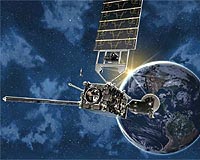| . |  |
. |
Boulder CO (SPX) May 12, 2009 The largest and most ambitious tornado study in history will begin next week, as dozens of scientists deploy radars and other ground-based instruments across the Great Plains to gain a better understanding of these often-deadly weather events. The collaborative international project, involving scientists from the National Center for Atmospheric Research (NCAR) and a number of other organizations, will examine in detail how tornadoes form and the patterns of damage they cause. The findings are expected to improve tornado warnings and short-term severe weather forecasts. The field campaign, known as VORTEX2 (Verification of the Origins of Rotation in Tornadoes EXperiment 2), will run from May 10 to June 13. A second phase is planned for the spring of 2010. "We still do not completely understand the processes that lead to tornado formation and shape its development," says Roger Wakimoto, director of NCAR's Earth Observing Laboratory and a principal investigator for VORTEX2. "We hope that VORTEX2 will provide the data we need to learn more about the development of tornadoes and in time help forecasters give people more advance warning before a tornado strikes." The $11.9 million VORTEX2 program is funded primarily by the National Science Foundation, which sponsors NCAR, and by the National Oceanic and Atmospheric Administration. In addition to NCAR, participants include the Center for Severe Weather Research, Rasmussen Systems, NOAA National Severe Storms Laboratory, NOAA Cooperative Institute for Mesoscale Meteorological Studies at the University of Oklahoma, Pennsylvania State University, University of Oklahoma, Texas Tech University, Lyndon State College, University of Colorado, Purdue University, North Carolina State University, University of Illinois, University of Massachusetts, University of Nebraska, Environment Canada, and the Australian Bureau of Meteorology.
The crucial zone Building on that progress, VORTEX2 researchers will use enhanced mobile radars and other new weather-sensing tools to gather far more detail on the crucial zone where tornadoes develop. Rapidly changing contrasts in wind and temperature in this zone, which is only a few miles across, can spawn a tornado within minutes. However, such an event happens in only a small fraction of supercell storms, and standard observing networks and radars often fail to capture the atmospheric conditions that lead to a tornado. "VORTEX2 will help us better understand the difference between thunderstorms that produce tornadoes and those that don't," says NCAR scientist David Dowell, a VORTEX2 field coordinator. "By identifying the characteristics of severe thunderstorms that produce tornadoes, forecasters will be able to issue tornado warnings further in advance and potentially save lives."
Probing a vast region with high-tech tools The VORTEX2 study area spans more than 900 miles, stretching from west Texas to southwest Minnesota. On each day of operations, participants will position equipment about an hour ahead of a potentially tornadic storm and remain in place until the storm arrives. NOAA forecasters and partners will provide intensive guidance on short-fuse weather events as each day unfolds. The University Corporation for Atmospheric Research manages the National Center for Atmospheric Research under sponsorship by the National Science Foundation. Any opinions, findings and conclusions, or recommendations expressed in this publication are those of the author(s) and do not necessarily reflect the views of the National Science Foundation.
Share This Article With Planet Earth
Related Links VORTEX2 National Center for Atmospheric Research (NCAR) Weather News at TerraDaily.com
 Weather Satellites Continue To Face Cost Overruns And Delays
Weather Satellites Continue To Face Cost Overruns And DelaysWashington DC (SPX) Apr 27, 2009 The Subcommittee on Energy and Environment heard from the Government Accountability Office (GAO), the National Oceanic and Atmospheric Administration (NOAA) and the National Aeronautics and Space Administration (NASA) on the status of the new Geostationary Operational Environmental Satellite-R (GOES-R) series of weather satellites being developed by NOAA. At the request of the Committee, G ... read more |
|
| The content herein, unless otherwise known to be public domain, are Copyright 1995-2009 - SpaceDaily. AFP and UPI Wire Stories are copyright Agence France-Presse and United Press International. ESA Portal Reports are copyright European Space Agency. All NASA sourced material is public domain. Additional copyrights may apply in whole or part to other bona fide parties. Advertising does not imply endorsement,agreement or approval of any opinions, statements or information provided by SpaceDaily on any Web page published or hosted by SpaceDaily. Privacy Statement |